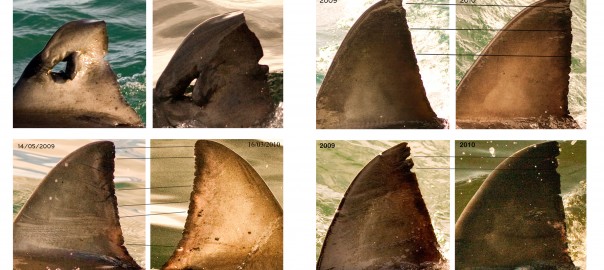This is the basis of all research projects Shark Diving Unlimited have been part of. The aim of this identification program is to document all the individual animals, their arrival times, size and gender. The best way to identify and document the sharks is by taking photos of the animal’s dorsal fins as the rare of the dorsal fin proved to work as a fingerprint: a unique feature that allow to permanently distinguish each individual.
The photos are then stored in a central database to constantly monitor the white sharks visiting the area of Gansbaai.
Mike Rutzen and his team, along with Sara Andreotti, have been working on this project since 2009. To date they have identified roughly 400 animals. In order for this program to work successfully it needs to be done accurately and on a continuous basis by motivated conservationists.
The method used to accurately identify and categorize the individual sharks was presented in the Southern African Shark and Ray Research Meeting in February 2011 and then published in the African Journal of Marine Science as:
Andreotti, S., Rutzen, M., Wesche, P., O’Connell, C., Meÿer, M., Oosthuizen, H. & Matthee, C. 2014 A novel categorisation system to organize a large photo identification database for white sharks Carcharodon carcharias. African Journal of Marine Science 36, 59–67. (doi:10.2989/1814232X.2014.892027)
http://www.tandfonline.com/doi/abs/10.2989/1814232X.2014.892027
